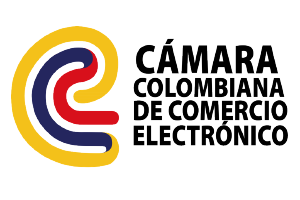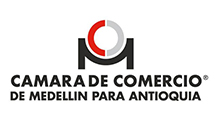Jus sanguinis is the right that attaches to a person because of his blood, i.e., because of his family ancestry.
Thus, when we speak of the possibility of acquiring Italian citizenship by ius sanguinis, we mean that the descendants of an Italian have the right to request the recognition of their Italian nationality by inheritance, in compliance with certain requirements and by virtue of the provisions of Circular K.28.1 of 1991.
In Colombia, in particular, it is estimated that there are about 2’000,000 people with Italian ancestors, as a result of immigration to the country around the nineteenth century, whose figure increases considerably if one takes into account not only the Italians who immigrated directly to Colombia, but also their descendants who, having been born in other countries, arrived in Colombia in later years.
How do I know if I can obtain Italian citizenship by ius sanguinis?
Since this is a blood right, an investigation of the family origins must be made, to determine if there was an Italian ancestor in the family, being a good indication of this the surnames of Italian origin.
A good start for this tracing is a simple search of the surname in genealogical databases such as Family Search or Geneanet. Subsequently, relatives can be consulted to detect an Italian ancestor.
If this bears fruit and a possible surname match or a possible relative is obtained, a deeper inquiry can be made, consulting civil registries and baptismal certificates until reaching that possible Italian relative in the ascending line.
What is the upline?
It is an imaginary line that is drawn between people who are descended from each other, such as between your grandparents and your parents or between your grandparents and you.
Up to which generation should I look?
Although there is no limit concerning up to which generation the Italian nationality can be transmitted, the law establishes that it could only be transmitted by those who had been citizens of the Italian Republic, which was constituted until March 17, 1861, so it is necessary that the last Italian relative had survived at least until that day to have acquired the citizenship himself and, therefore, to have inherited it to his descendants.
What do I do if I have an Italian ancestor?
It is possible to request the recognition of Italian citizenship through administrative or judicial channels, but it should be noted that, until January 1, 1948, the date of issuance of the Italian Republican Constitution, only men had citizenship and, therefore, only they could transmit it, which does not mean that, if your Italian ancestor is a woman, you cannot acquire citizenship, but that you can only request it through judicial channels. So, you have a choice:
Administrative:
- If all the relatives in your upline are male.
- If the child of the first woman in the ascending line was born after 01/01/1948.
Judicial channels:
- Whenever you wish, especially if several members of the same family wish to acquire Italian nationality.
- If the child of the first woman in the ascending line was born before 01/01/1948.




Why choose one way or the other?
If you have a choice, you might prefer the administrative route if:
- You want to and can travel to Italy to do the paperwork.
- You wish to wait for the opening of the appointments for the procedure at the Colombian embassy.
Whereas you may prefer to go to court if
- There are several in your family who wish to apply for citizenship.
- You can’t make the trip all the way to Italy.
Why?
- For agility in the process: The consular route, which corresponds to an administrative process from another country, is so congested in most countries that the process is expected to take years (3, in Colombia, according to the consulate). On the other hand, if it is processed directly in Italy, choosing the correct province and if there are no complications, it can take as little as 2 months.
- By concurrence of applications: If several people in your family who share the same Italian ancestor (parents, uncles, aunts, brothers and cousins) wish to apply jointly, they can pay a single fee, for a single trial, and process all the applications at the same time.
Requirements and documentation
Once you are sure that you have an Italian ancestor who was able to pass on citizenship to you, you must obtain:
- Certificate of non-renunciation of Italian nationality.
- Civil registry of birth of the Italian ancestor.
- Civil records of birth, marriage, divorce and death of each of the members of the ascending line.
- In case of divorce, proof of recognition of the children.
- Own civil birth and marriage records (if applicable).
- Copy of passport.
- Completed family tree.
- Copy of the applicant’s spouse’s citizenship card (if applicable)
- Proof of residency.
Note: Documents not issued by an Italian authority must be submitted with their respective apostille and official translation.
Costs
According to the website of the Italian Consulate in Bogota, the consular fee for the application for recognition of Italian citizenship by a Colombian adult is €300.
On the other hand, the trial in Italian court costs around €3000.
However, the total cost, either by judicial or administrative means, will vary according to the amount of documents to be obtained for the application, the number of applicants, whether the application will be made in Italy or abroad, among others.
Do you still have any doubts?
We leave you the explanatory video of the Italian Consulate in Bogota.
Still have doubts?
Contact us for personalized advice. Write us here and we will be glad to assist you.
What does our service include?
- Personalized advice.
- Solution of doubts.
- Processing of apostilles and translations
- Assistance in obtaining the necessary documents.



